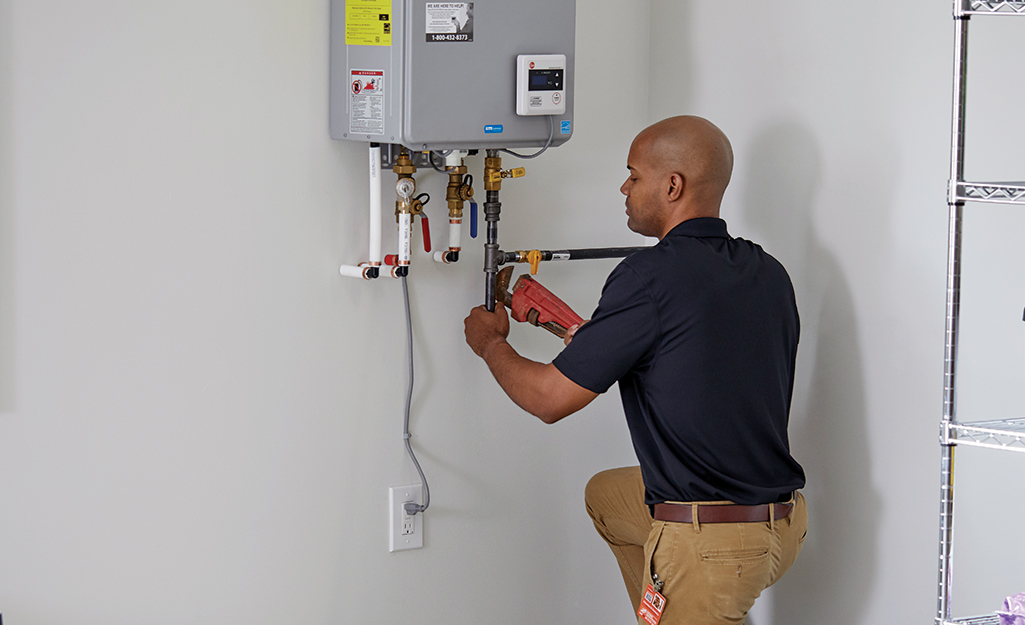We have noticed this post about How to Maintain a Hot Water Heater in a Few Simple Steps below on the web and accepted it made sense to talk about it with you on my blog.

Warm water is crucial for day-to-day comfort, whether it's for a refreshing shower or washing recipes. To guarantee your hot water system runs effectively and lasts longer, regular upkeep is vital. This short article provides functional tips and understandings on exactly how to maintain your home's warm water system to prevent disruptions and expensive fixings.
Intro
Maintaining your home's warm water system might appear difficult, yet with a few straightforward steps, you can guarantee it operates efficiently for years ahead. This overview covers whatever from understanding your hot water system to DIY upkeep ideas and knowing when to hire specialist help.
Relevance of Maintaining Your Warm Water System
Regular upkeep not just prolongs the lifespan of your hot water system however also ensures it runs effectively. Overlooking upkeep can result in decreased effectiveness, higher power expenses, and also early failure of the system.
Indications Your Warm Water System Requirements Upkeep
Understanding when your hot water system requires attention can stop major concerns. Look out for indicators such as inconsistent water temperature level, strange sounds from the heater, or rustic water.
Understanding Your Hot Water System
Prior to diving into upkeep tasks, it's practical to understand the standard components of your warm water system. Typically, this consists of the hot water heater itself, pipes, anode poles, and temperature controls.
Monthly Maintenance Tasks
Routine month-to-month checks can help catch minor problems prior to they rise.
Flushing the Water Heater
Flushing your hot water heater gets rid of debris buildup, improving effectiveness and extending its life.
Monitoring and Changing Anode Rods
Anode rods prevent corrosion inside the storage tank. Examining and replacing them when worn is vital.
Evaluating and Readjusting Temperature Settings
Adjusting the temperature settings guarantees ideal performance and security.
DIY Tips for Maintenance
You can carry out a number of maintenance tasks yourself to keep your hot water system in top condition.
Checking for Leaks
Routinely examine pipes and connections for leaks, as these can result in water damage and higher costs.
Checking Stress Relief Valves
Checking the pressure safety valve ensures it operates properly and protects against extreme pressure accumulation.
Insulating Pipelines
Insulating warm water pipes minimizes warmth loss and can save power.
When to Call an Expert
While do it yourself maintenance is valuable, some issues need professional know-how.
Facility Problems Calling For Specialist Aid
Examples consist of significant leaks, electric problems, or if your water heater is continually underperforming.
Routine Specialist Maintenance Perks
Professional upkeep can include complete inspections, tune-ups, and making sure compliance with safety criteria.
Final thought
Regular upkeep of your home's warm water system is essential for performance, longevity, and cost savings. By complying with these suggestions and understanding when to seek professional help, you can guarantee a reliable supply of hot water without unforeseen disturbances.
How to Maintain an Instant Hot Water Heater
Before tinkering with your hot water heater, make sure that it’s not powered on. You also have to turn off the main circuit breaker and shut off the main gas line to prevent accidents. Also turn off the water valves connected to your unit to prevent water from flowing into and out of the appliance. 2. When you’re done, you have to detach the purge valves’ caps. These look like the letter “T†and are situated on either side of the water valves. Doing so will release any pressure that has accumulated inside the valves while at the same time avoid hot water from shooting out and burning your skin. 3. When the purge valves’ caps are removed, you have to connect your hosing lines to the valves. Your unit should have come with three hoses but if it didn’t, you can purchase these things from any hardware or home repair shops. You can also get them from retail stores that sell water heating systems. Read the user’s manual and follow it to complete this task properly. When the hosing lines are connected, open the purge port’s valves. 4. You should never use harsh chemical cleaners or solutions when cleaning your unit. Make use of white vinegar instead. It should be undiluted and you’ll probably use about 2 gallons. 5. Now flush your water heater. This task should probably take about 40 minutes. We can’t give you specific directions for this because the procedure is carried out depending on the type, model and brand of your heater. With that being said, refer to the user’s manual. 6. When you’re done draining the unit, you have to turn off the purge port valves again. Remove the hosing lines that you earlier installed on each of the water valves. Put the valve caps (purge port) back in their respective places and be very careful so as not to damage the rubber discs that are found inside these caps. 7. Now that everything’s back in place, check your user’s manual again to find out how to reactivate your water heating system. 8. Once it is working, turn one of your hot water faucets on just to let air pass through the heater’s water supply pipes. Leave the tap on until water flows smoothly out of it. https://www.orrplumbing.com/blog/2014/september/how-to-maintain-an-instant-hot-water-heater/

I'm very fascinated with Water Heater Maintenance Tips You Can't Afford to Forget and I am assuming you enjoyed the entire page. Sharing is caring. You just don't know, you could be helping someone out. Thank-you for taking the time to read it.
Click Here